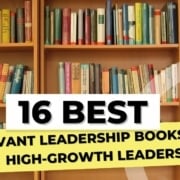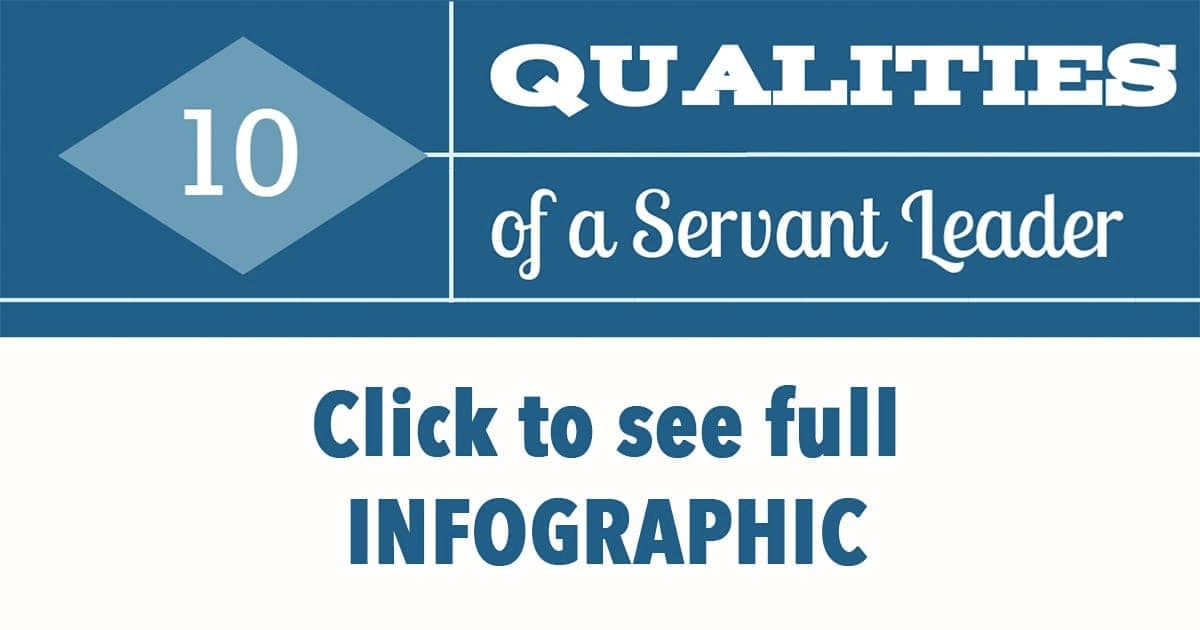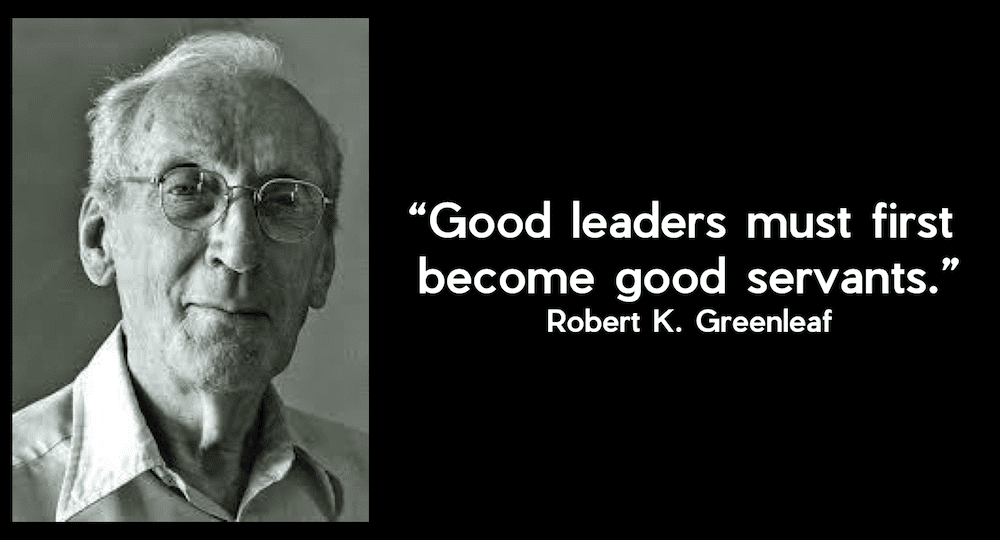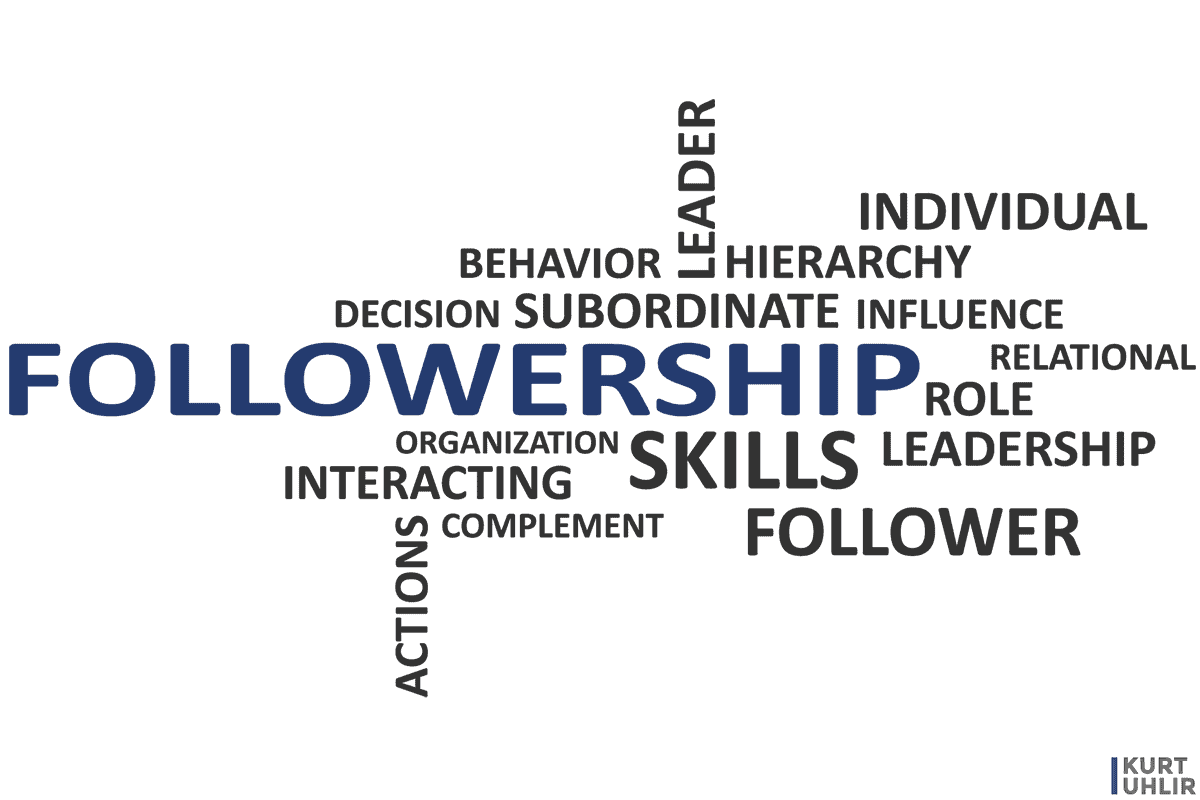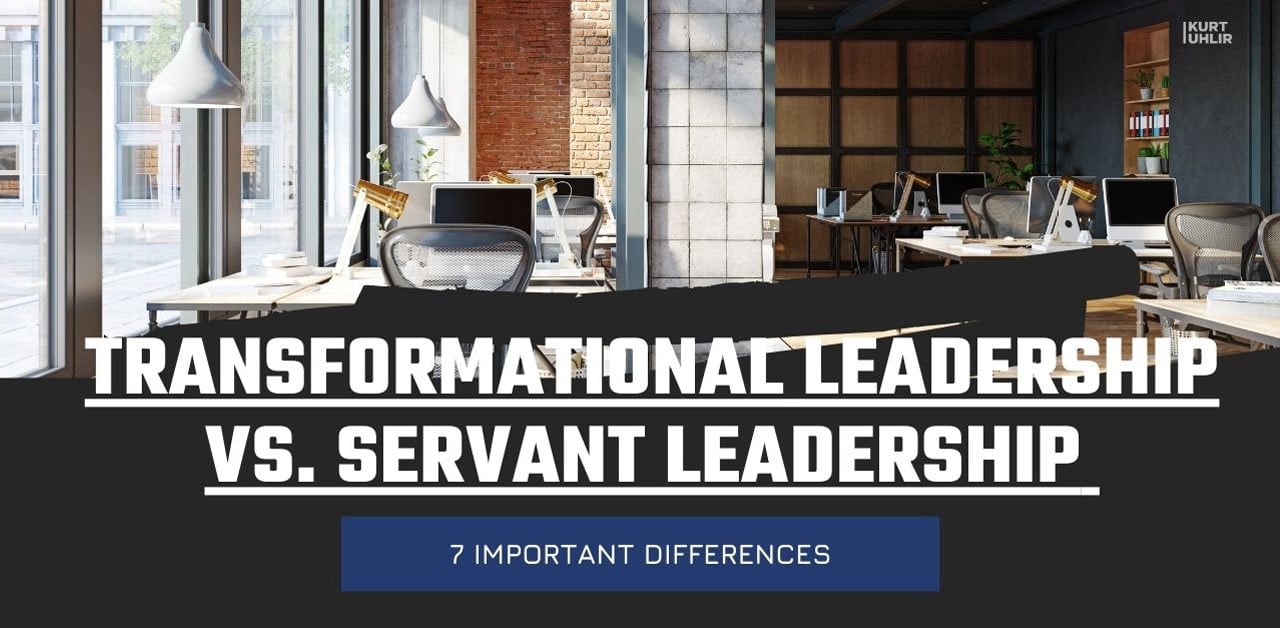The 16 Top Servant Leadership Books for High-Growth Leaders
Are you a leader looking to make an impact and experience exponential growth with your team? In this fast-paced and increasingly competitive world, leaders experience ever-mounting pressure to perform. Unlike transformational leadership, which focuses on inspiring and motivating change, servant leadership emphasizes serving others to enhance personal growth and team success. This coupled with personal ambition, family expectations, and the need to prove yourself can prove detrimental to your leadership style and personal growth. You need servant leadership principles and a proven path to ground you and help you achieve your potential as a leader.
Books on servant leadership are the perfect tool for you to reach your full potential. They provide valuable insight into the servant leadership model and how to use it to cultivate a culture of success for your team.
I read (sometimes audiobooks) 40 – 100 books per year, and it’s the end of March and my wife has already read 60 this year. We’ve gone through a small library over the years, and are building one for our kids.
In this article, I’ll take a look at 16 examples of top servant leadership books for high-growth leaders and provide a detailed overview of each one. Which ones should you read, and which ones could be a skip.
What Is Servant Leadership?
Servant leadership is a concept that was popularized by Robert K. Greenleaf in 1970 and soon became adopted by businesses around the country. Greenleaf based the idea of servant leadership on the fact that the best way to lead is by focusing on serving others.
A servant leader is one who places the needs of those who look up to, or report to, them above their own. Their focus is on developing their team and helping each member grow to reach their potential. These leaders value feedback and encourage open communication. The know what emotional intelligence (otherwise known as emotional quotient or EQ) is and they slow down to incorporate it into their responses, even though none of us get it right all of the time.
Many companies have adopted Greenleaf’s servant leadership principles because they were proven to produce a positive and productive work environment. Servant leadership also encourages collaboration, improves customer satisfaction, and reduces employee turnover.
Why Is It Essential For High-Growth Leaders?
Servant leadership is vital for high-growth leaders because it creates an environment that encourages innovation and creativity. By positively impacting the organizational culture, servant leadership fosters a supportive atmosphere where team members feel valued and motivated to contribute their best efforts.
The principles of servant leadership also lead to more productivity and thus more success. They encourage collaboration which enables everyone to work at optimum capacity by sharing the workload. More collaborative efforts ensure that the team accomplishes more than it would if they were at odds. This in turn increases productivity and success.
Servant leadership also encourages a deeper meaning and purpose to work. This brings forth better customer service and increased motivation for work. Team members become more engaged with their work, putting in more effort and paying better attention to customers.
I know numerous Christian, Jewish, Muslim, and Hindu leaders that were originally drawn to this leadership style because of their faith. While I do see where my faith calls me to be a servant leader, my experience with multiple hypergrowth companies, scaling many larger organizations, and coaching executives around the world have shown me that this leadership style will consistently allow you to grow a company faster and higher than traditional leadership methods.
16 Top Servant Leadership Books for High-Growth Leaders
To learn more about servant leadership, what it entails, and how to become and grow as a servant leader, here are the 16 best books about servant leadership to read:

Servant Leadership: A Journey Into the Nature of Legitimate Power and Greatness (25th Anniversary Edition) by Robert K. Greenleaf
Greenleaf did not invent servant leadership, but he did put the name to it and spark the modern focus on it.
This new edition of one of the classic leadership books remains a critical read for many business leaders. First published in 1977, Servant Leadership by Robert Greenleaf offered a new management paradigm for corporate America. He proposed that the most distinguishing characteristic of leadership should be service.
Robert is a retired AT&T executive himself and noted in his book that using a servant leadership approach gave him better results. In this book, he states that servant leadership not only creates stronger companies but enables business leaders to find greater joy in their personal lives.
Greenleaf emphasizes that servant leadership is about creating success by prioritizing the needs and development of team members.
This book helped popularize servant leadership in corporate America since its release over 40 years ago. Greenleaf states that a servant leader constantly asks whether or not other people’s highest priority needs are being served. He mentions that those who their leaders serve become wider, freer, more autonomous, and in turn serve others, continuing the cycle of servant leadership.
Greenleaf emphasizes that a true leader seeks out new opportunities and is open and willing to listen. Authentic leadership is thus an inner quality as much as it is an exercise of authority according to the principles shared in this book.
The 25th edition offers a look into how different people have implemented servant leadership as their general leadership principle. I find it reads like an essay or TED talk and has a section on leadership in diverse areas such as government, education, church, and more. Overall, it is an interesting book that offers real-life examples of how to implement servant leadership and its impact.
I find this a good foundational book if you’re new to the topic. If you already have some experience, place it further down your queue but definitely go through it at some point. I would suggest you place this in your audiobook queue. It’s great, but not one that you’ll be referencing your underlines in or tables of data.

Dare to Serve: How to Drive Superior Results by Serving Others by Cheryl Bachelder
This book written in 2015 was praised by New York Times-bestselling author John C. Maxwell as “A new perspective on servant leadership.”. The author Cheryl Bachelder is a former Popeyes CEO and challenges leaders to bring both courage and humility to their roles as they attempt to unlock company growth. She shows that leading by serving is a rigorous and tough approach but it always yields the best results.
After her role as the CEO of Popeyes, Bachelder decided to put together a book on her observations on effective leadership at the company as well as the impact of its leaders at companies after leaving Popeyes.
When she took over as CEO in 2007, Popeyes was a stagnant brand with a low stock price and a discouraged team. Nine years after Bachelder, the sales were up 45%, profits had doubled, and the stock price increased to $61 from $13. This was proof that servant leadership worked.
Bachelder states that servant leadership is sometimes looked at as soft and ineffective leadership.
However, her experiences and research showed that this was not true. She explains how servant leadership is all about challenging teams to reach daring destinations by example and focusing on treating them with dignity. These conditions produce superior performance.
This book delves deep into Bachelder’s firsthand experience of using servant leadership to transform Popeyes. It shows that anyone can become a leader who dares to serve. It offers practical tips and showcases firsthand experience on why Bachelder will always stand by servant leadership as the best form of leadership.
This is my favorite business book on servant leadership for overcoming objections. It shows many examples of the superior business results and lower risk from fully implementing the servant leadership style at ALL levels of your company.
Have a boss or leadership team that leads by “the numbers”? This is the book to read with them to see that authoritative leadership styles may work in the short-term but underperform the company’s potential.
Make sure that you get the second edition of this book. It has meaningful updates that you will appreciate
The Servant Leader: How to Build a Creative Team, Develop Great Morale, and Improve Bottom-Line Performance by James A. Autry
James Autry’s The Servant Leader is a solid place to start for those looking for a how-to guide on servant leadership. This book is a practical and actionable guide to the principles of servant leadership.
Autry is a former Fortune 500 executive turned bestselling author and he swears by servant leadership principles. He says that leadership is a calling and servant leadership is the way to answer that calling. He focuses on teaching leaders how to manage others with respect, honesty, love, and spirituality.
The Servant Leader is a book that reveals the tools a servant leader needs to transform the way business is done. These tools help leaders nurture the needs and goals of their teams. As a result, everyone is more productive, happy, and successful and so is the organization as a whole.
Autry discloses the keys to properly utilizing the servant leadership model. He dives into how to remain true to servant leadership every day and during long-term situations. Some of these keys include assuring your continuous growth and progress as a leader and providing guidance during crises.
I like how Autry reveals a lot of wisdom and knowledge but also gives practical solutions for those struggling to start their journey into servant leadership. It’s a great book to study and take notes from but also use to implement better leadership strategies.
If you like reading about “Rock Star” CEOs and the polished version that most business leaders share, you will not like this book. Before I read it, I had numerous friends from the military (of multiple countries), church leaders, and a few business friends suggest this book. Even if you’re a follower of this leadership style, this is a good book to go through and one that I would recommend having a print copy of.

The Servant: A Simple Story About the True Essence of Leadership by James C. Hunter
First published in 1998, The Servant still offers us unique knowledge of what it truly means to be a leader. James Hunter beings by helping you understand how to use the principles outlined in his book in your life and career. He then dives into an absorbing tale that introduces these principles.
The story Hunter uses to illustrate the principles of servant leadership is one of John Daily, a businessman. It shows how Mr. Daily had an outwardly successful life because of his thriving business. However, his life was spiraling out of control fast because he was failing as a leader in all his roles: father, husband, boss, and coach. John decides to attend a weeklong leadership retreat at a remote Benedictine monastery to see if he can salvage his life.
The monk leading the seminar is a former business executive and Wall Street legend. He decides to mentor Mr. Daily, guiding him to a simple yet profound realization about leadership. The monk helps John see that the foundation of leadership is not power but authority which is built on love, service, sacrifice, and relationships.
The Servant is a teaching book and together with John, you will learn the principles of servant leadership. The book does not offer complex solutions or difficult steps. It focuses on foundational knowledge and easy-to-implement tips. Anyone can read The Servant and apply the principles in their everyday life. And for leaders, this book helps you understand the timeless virtues of impactful success.
My friend and fraternity brother Eric Lent first recommended this book to me over lunch many years ago. On my first read of the book, what stood out to me is the narrative approach to walking through the concepts of servant leadership and how it applies both to work and home. I found it to be both an easy, fast read. I purchased a copy of the audiobook a few years later, and it has become a repeat listen on the drives up to our cabin in Blairsville.

Seven Pillars of Servant Leadership: Practicing the Wisdom of Leading by Serving by James W. Sipe, Don M. Frick
For those looking to elevate their servant leadership, I find the Seven Pillars of Servant Leadership is the ideal place to start. This book offers training on how to grow as a servant leader by implementing certain competencies.
If you like practical books that take you through step-by-step principles, this is a great book to add to your morning routine. You’ll go through pointed questions, case studies, stories, and activities based on research. They are all hand-picked by the authors to help you think critically and implement the lessons in the book.
Sipe and Frick have conducted field tests with a large number of leaders in the public and private sectors to produce this book. When reading the Seven Pillars, you won’t just learn about individual skills. Every chapter tells stories of companies led through servant leadership. You’ll start to understand what specific leadership principles and skills to implement in your corporate culture to adopt the servant leadership model.
The book ends with techniques and instances you can use to execute the servant leadership model in your position or organization.
While you can read it by yourself, I find this is a better book to read as a small group. You’ll have a lot of things to reflect on and hopefully, you will implement these seven pillars of servant leadership.

The Serving Leader: Five Powerful Actions to Transform Your Team, Business, and Community by Ken Jennings, John Stahl-Wert
The Serving Leader is a team-focused leadership book. Instead of diving into how to improve a leader from the individual perspective, you’ll learn more about how leaders can help people achieve greatness.
Jennings and Stahl-Wert show how leaders can inspire greatness in their team members. They showcase servant leadership principles a leader must have to inspire their team through a compelling fictional story. The authors base their story on real people and organizations and the results seen in the story are real results experienced by organizations that implement these principles.
The newest edition of the book has an added chapter. The chapter focuses on checking in with Mike, the main character of the story, 12 or so years later to see what he learned since embracing servant leadership. This chapter is especially important for those who struggle to understand the benefits of servant leadership in the future.
If you want a practical guide to implementing servant leadership and love storytelling books, The Serving Leader is ideal for you. It will help you take a journey of personal growth needed for real leadership. You’ll learn how to help your team and in turn, how to help yourself.
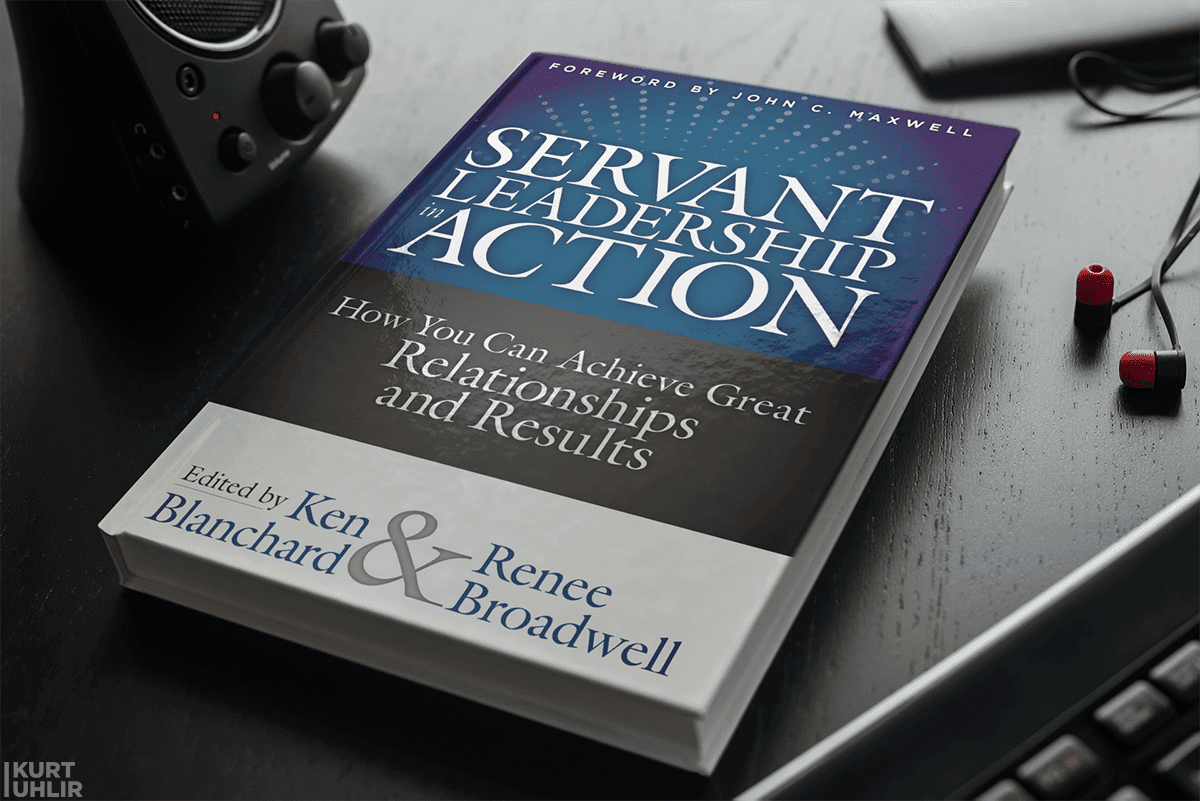
Servant Leadership in Action: How You Can Achieve Great Relationships and Results by Ken Blanchard & Renee Broadwell
John Maxwell wrote a forward for Servant Leadership in Action that states, “The only way to create great relationships and results is through servant leadership. It’s all about putting other people first.”. This book dives into how to do that.
It is a collection of tips and stories from forty-four famed servant leadership experts and practitioners. You’ll read advice from prominent business executives, respected spiritual leaders, bestselling authors, and more. It’s like forty-four individual mentorship sessions with great leaders.
From Servant Leadership in Action, you’ll learn the tools needed for implementing servant leadership in your everyday life or your management role. This is not a book to read in one or two sittings; you need time to digest each nugget of wisdom and a journal to write what you can take away from every servant leader’s unique experience.
I like to say that I’m not simply looking for people to show up for work tomorrow but for people that will want to go to war with me. There are so many companies offering poor experiences to customers and practicing cronyism (an economic system in which businesses thrive not as a result of free enterprise, but rather as a return on money amassed through collusion between a business class and the political class) that we have an obligation to our communities and families to grow companies a better way. This book helps with that discussion among your team.
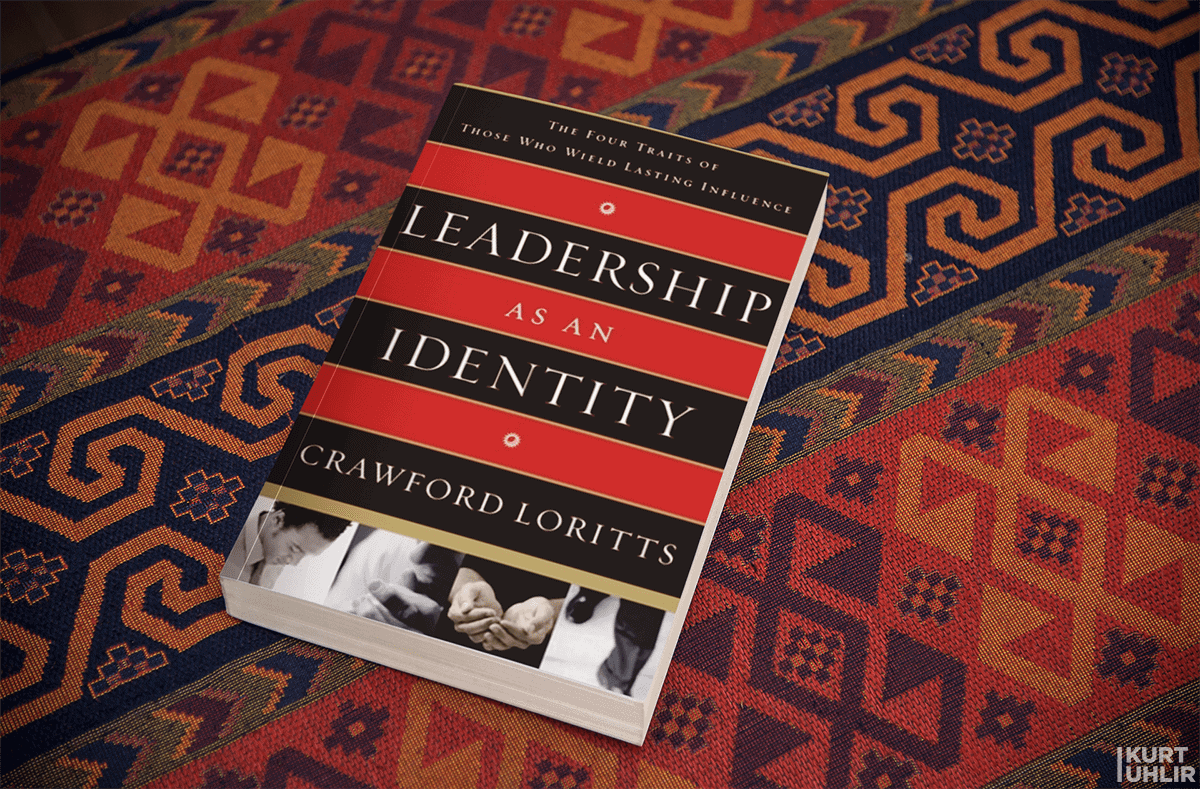
Leadership as an Identity: The Four Traits of Those Who Wield Lasting Influence by Crawford W. Loritts
I first found out about Crawford from syndications of his sermons on Moody Radio, and we later became members of Fellowship Bible Church where he pastored for years. I then was blessed to spend many many 5am mornings with him over two years as part of Fellowship Institute which he and Bob Roland used for indepth teaching. While I saw multiple issues arise from the leadership below him and a few levels down, he is the real deal. You’ll benefit from reading this book and hearing his approach to true leadership.
Pastor Loritts talks about the character traits of a Godly leader in this profound book. He gets into the details of the fact that the traits we look for to determine a Godly leader are not even needed Traits like personality, communication skills, previous experience, and education.
In Leadership As An Identity, Loritts answers the question of what exact traits are needed in a Godly leader. He details the four traits of servanthood, brokenness, communion, and obedience in detail. He talks about how these four traits are the framework for servant leaders.
Loritts explains why unbiblical assumptions hinder biblical leadership. He talks about why a Godly leader does not need worldly qualifiers but rather biblical ones to lead. While education, experience, and even personality do help, they don’t qualify or disqualify you from being a Godly leader.
If you’re looking for wisdom and knowledge on Godly leadership, this is one of the best books to read. Loritts reminds every reader that good leaders are diligent disciples.

Leaders Eat Last: Why Some Teams Pull Together and Others Don’t by Simon Sinek
Simon Sinek is definitely one of the greatest thought leaders of this generation. While his book Start with Why caused negative results for a number of companies by suggesting that all brands should act like challenger brands and take strong positions on a broad range of topics, the core of that book was to take the time to understand your (and your company’s) “why”.
In his book Leaders Eat Last, he talks about what it takes to create a productive team of trusted members. He got the idea for the title when he watched the Marine Corps and saw that the junior Marines ate first and the senior Marines ate last.
From his time observing the Marines and other businesses, Sinek was able to deduce that great teams were made by leaders who sacrificed their comfort for the good of those in their care. Workplaces driven by self-interest and paranoia tended to breed fragmentation, failure, and infighting. But those that foster trust and cooperation are led by leaders who put themselves on the line for their team.
This book is a fascinating read on the realities of servant leadership and how true servant leadership influences team performance and spirit. Sinek illustrates his leadership ideas with captivating stories from big business, investment banking, the military, and even the government. It’s an interesting and eye-opening read.
It was from reading this book that I replayed the thousands of dinners at my parents’ table both while growing up and while visiting as an adult. I cannot recall a single time when my Father Kent ever ate before everyone else had started. Even when he had returned from a deployment overseas or from a business trip with Bell Labs/AT&T/Lucent, he would make sure that everyone else was served and had what they needed prior to eating himself.

The World’s Most Powerful Leadership Principle: How to Become a Servant Leader by James Hunter
In this book, James Hunter expands on the most powerful leadership principle: “To lead is to serve.”. He champions the hard-soft approach to leadership to turn managers into mentors and coaches.
Hunter explains that “hard” means that servant leaders can be autocratic when handling the running of a business and setting standards for performance and accountability. He states that leaders do not need to take a vote when implementing critical fundamentals as it would paralyze business operations. He however says that once the structure is provided, servant leaders focus on empowering employees, not berating them.
The “soft” approach involves giving employees what they need to win, such as resources, time, inspiration, and guidance. This hard/soft approach is the key to servant leadership according to Hunter. Servant leaders strive to provide for their team and build authority and exert influence. They do not resort to intimidation or accumulating power.
This book delves into how to implement servant leadership in a simple but dedicated way. It differentiates between servant and self-serving leaders. Hunter reiterates that anyone can become a servant leader and it is never too late to switch from self-serving to serving others.
I appreciate how this book reminds leaders that the key is to be intentional and that serving your team looks at how the short-term decisions will impact both the indviduals and the company in the long-term.

Multipliers How the Best Leaders Make Everyone Smarter by Liz Wiseman, Greg McKeown
Wiseman and McKeown will take you on a journey of what it means to have impactful leadership. They explore two different leadership styles to help the reader understand how a leader becomes impactful.
On one hand, there is the draining leader. The one who sucks out the life, energy, and ideas from their team and tries to diminish talent or performance to elevate their intelligence.
On the other hand, the authors describe the amplifying leader. This is the leader who uses their intelligence to light up a room, encourage their team, and take every opportunity to build up and acknowledge effort and ideas.
McKeown and Wiseman describe the second type of leaders as multipliers because they stretch themselves to deliver better results by encouraging those who work for them. The authors have analyzed more than 150 leaders and identified what sets the multipliers apart. These five disciplines of multipliers are outlined and explained in this book clearly.
You’ll get real-world case studies, practical tips, and engaging data on each of these principles. After each chapter, you will have actionable steps you can take to become a multiplier as well.
The overall concepts of the book are good, and I agree with many of their suggestions. However, I worry that this book will suffer from the similar results of Jim Collins book Good to Great, where so many of the example companies underperformed both their peers and market in future decades. I’d encourage you to listen to the principles more than the specifics.

Give and Take: Why Helping Others Drives Our Success by Adam Grant
For many generations, corporate America has focused on the individual drivers of success. By amplifying only individual effort, luck, talent, and passion, group efforts have been forgotten. In turn, the concept of helping others to achieve success sounds bizarre. Adam Grant aims to change that with this book.
Give and Take is an excellent book that examines the forces that shape successful leaders. He also goes into detail about what makes others unsuccessful as leaders. Grant uses his award-winning research skills to present cases and studies on the give-and-take required to make it to the top.
This book opens a less common approach to work and climbing the corporate ladder. Rather than focusing solely on individual success, Grant suggests that we equally focus on helping others achieve success as well. Give and Take is an interesting read that offers a different perspective on succeeding in corporate America that you may not get in other business books.
Many of us have seen the negative effects of promoting those that are good at their current roles but may not be suited for or skilled at leading others. I think this book will help you see that it is in the best interests of both the individual and the company to look for those with the potential to lead those with diverse viewpoints and approaches. It is in our best interest to cultivate the desire and skills to serve others.

The Power of Servant-Leadership by Robert Greenleaf
Another monumental book on servant leadership by Robert Greenleaf. The Power of Servant Leadership is a collection of Greenleaf’s works on servant leadership. It’s a sequel to Servant Leadership so you’ll need to read that first before delving into this one.
This collection of eight essays is made to inspire you to servant leadership. It focuses on commitment to a vision, seeing things as a whole and not as parts, the spiritual aspect of leadership, and other principles Greenleaf considers integral to practicing servant leadership. It’s an uplifting read that helps you think.
I might put this one at the bottom of your list and look for some more practical books by authors Larry Spears, Jim Kouzes, Garry Ridge, Jon Gordon, David Marshall, or others that could be on your reading list. The Greenleaf essays are great though for highlighting the key principle and natural feeling of servant leadership that I see in the modern servant leadership movement.

What Makes a Leader Great by Russ Crosson
Many have described Russ Crosson’s What Makes A Leader as a humbling book. Once you read it, you’ll undoubtingly agree. In the book, Russ Crosson, the CEO of Ron Blue, talks about how he learned the hard way what makes a good leader.
Russ opens up about how he went from expecting to take over for the CEO of a well established company and instead was relegated to a significantly reduced role. He shares what he learned about the mistakes he made and the years of learning he took. Where most people would quit after being demoted, Russ stayed. This book is that journey.
Russ states that it is doubtful that a person can lead effectively if they have not been humbled or hurt deeply. He speaks of his own humbling experience and how it taught him an essential lesson on leadership. In the book, he says that leadership success is not about the leader at all. It is about the mission of whatever organization the leader is a part of.
This book talks about legacy and preparing another person to step up once you leave. Crosson iterates that true leadership is about passing on the mantle successfully. If the principles you used and the success you achieved cannot be replicated by those who come after you, you are not a successful leader. Those who come after you must be able to identify and implement your strategies and then improve on them.
What Makes A Leader Great is not a how-to book. This is a why-to book. It helps put into perspective why a leader needs to do certain things. This in turn makes leadership intentional, visionary, and successful.
My wife Valerie and I spent years in a Sunday School class taught by a small group that included Russ and his wife. I can tell you that the transparency and straight talk you will read in this short book is exactly who we saw in the numerous days with the Crossons.

Servant Leadership Roadmap: Master the 12 Core Competencies of Management Success with Leadership Qualities and Interpersonal Skills by Cara H Bramlett
If you want a no-frills, no-nonsense approach to servant leadership, the Servant Leadership Roadmap by Cara Bramlett is perfect. It is ideal for those stepping into leadership roles for the first time or managers looking to improve team results and rise above expectations. If you’ve been struggling to connect with your team or are anxious about the next step in your career, this book is worth the read.
Bramlett takes you on a journey to implementing servant leadership principles for management success. She does a deep dive into self-awareness and why leaders must be self-aware. You’ll learn how to identify your leadership style and qualities so that you can fine-tune them for servant leadership.
This book outlines the core competencies of leadership and thoroughly teaches each one. You’ll learn the 4-step method to solving any problem and how to become effective at making decisions. Being a leader is all about bringing people together to execute high-quality decisions. Bramlett teaches you how to relate to your team through emotional intelligence.
Servant Leadership Roadmap is a great how-to guide. It teaches the journey through every competency needed for servant leaders including humility, empathy, listening, teamwork, and respect. It also has activities that help you identify and strengthen your leadership competencies.
Take your time and go through this book slowly. It may take you months to finish but you’ll be a better leader. I recommend setting aside time to read and then implement as you work through this book to get the most impact. Approach it more of as workbook than a regular business book.

About My Father’s Business: Taking Your Faith to Work by Regi Campbell
About My Father’s Business is a book on leadership from a truly biblical perspective. Regi Campbell published this book in 2011 and it is one of the best bible-based career and business books available.
If you want to learn how to become a marketplace minister by utilizing servant leadership principles, this is the book for you. Campbell starts by teaching you exactly how to become an impactful Gospel-bringer in the business world by implementing biblical principles.
This book offers proven ways to become a spiritual leader at work, regardless of the position you hold. Through Campbell’s refreshing honesty on his struggles, you learn more about what it truly takes to be just like Jesus and influence for Christ in the workplace. It is a truly impactful book that doesn’t sugarcoat the struggles one has to go through to truly become a servant leader.
About My Father’s Business gives you an all-access pass to Campbell’s 20+ years of experience in implementing servant leadership principles in businesses of varying sizes. This practical guide helps you reconcile your quest for corporate accomplishment with the call to be a disciple every day. It shows you how you can keep living the faith while at work, even as you strive for corporate excellence. Campbell emphasizes how living out your faith at work is the key to a successful business life.
I was blessed to be in Regi’s 13th Radical Mentoring group and spend many many hours with him, and I continue to be active in the Radical Mentoring community to this day. I firmly believe that you only see the success in someone’s leadership from the ripples of those multiple levels (or generations) away from the leader.
I continue to be amazed at the businesses, families, and communities impacted by Regi. This book will give you a solid foundation to ask the difficult questions about how you lead and what the impact of your style and your actions are. While it is written for followers of Jesus, I heard positive things from friends of different faiths and no faith that have chosen to read it.
FAQs
Related FAQs sourced from Google’s People Also Ask and forums
What is the difference between servant leadership and other leadership styles?
The main difference between servant leadership and charismatic leadership is that servant leaders prioritize the needs of their team members, while charismatic leaders rely on their personal charm and persuasiveness to inspire followers.
What are the top-selling books on servant leadership?
The books covered in this list are among the best-selling books on servant leadership. They include Servant Leadership: A Journey Into the Nature of Legitimate Power and Greatness and The Power of Servant Leadership by Robert K. Greenleaf, What Makes a Leader Great by Russ Crosson, The Serving Leader: Five Powerful Actions to Transform Your Team, Business, and Community by Ken Jennings, John Stahl-Wert and more. Read the detailed reviews above for more on each one.
What is the best book on servant leadership?
Critically acclaimed and widely cited, Servant Leadership: A Journey Into the Nature of Legitimate Power and Greatness by Robert K. Greenleaf is considered by many to be the best book on servant leadership. It teaches great principles of servant leadership by using real-life examples of those who applied them for success. It’s engaging and practical and every page adds value.
How to become a servant leader?
To become a servant leader, you need to follow the basic principles of servant leadership. These are leading by example, encouraging collaboration, focusing on personal growth and encouraging those you lead to do the same, showing empathy and understanding, and asking for feedback. There are more principles of servant leadership as covered in the list above but these six are the foundational principles.
What is the difference between charismatic and servant leadership?
Charismatic leadership relies on a leader’s ability to charm, motivate, excite, and inspire others. It can sometimes be hollow as it focuses on words and exciting feelings. Servant leadership relies on a leader’s ability to motivate and inspire a team through acts of service. It does not focus on grand gestures or grandiose words but rather on the simple principles of servanthood.
What are the qualities of a servant leader?
A servant leader has many positive qualities. These include humility, courage, and strength. They also need to be good listeners, available, willing, and able to do what needs to be done.
Final Word
Servant leadership is an impactful and well-researched way to lead. It enables teams to perform better and encourages self-awareness and improvement in leaders. These 16 top servant leadership books help you to delve into the principles and applications of the servant leadership model.
Want to learn more about servant leadership? Get in touch today.

